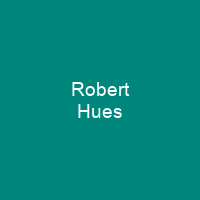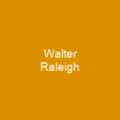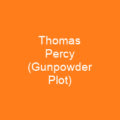Robert Hues was an English mathematician and geographer. He attended St. Mary Hall at Oxford, and graduated in 1578. Hues became interested in geography and mathematics, and studied navigation at a school set up by Walter Raleigh. Between 1586 and 1588, Hues travelled with Thomas Cavendish on a circumnavigation of the globe, performing astronomical observations and taking the latitudes of places they visited. In 1594, he published his discoveries in the Latin work Tractatus de globis et eorum usu.
About Robert Hues in brief

He may have either gone there on a fishing trip or may have joined a 1585 voyage led by Richard Grenville on the Virginia coast, which passed to Newfoundland, which he may have written about in his work Principium Principipium. In later years, he lived in Oxford where he was a fellow of the University, and discussed mathematics and related subjects with like-minded friends. One source indicates that he disputed accepted values of the compass variations off the Newfoundland coast, after making observations off the coast, and may have gone there after making a trip to Virginia in 1585. There is unsubstantiated evidence that he was held in the Tower of London after completing his degree, though no reason is given for this, then went abroad after his release. He stayed with Thomas Grey, 15th Baron Grey de Wilton, while he was imprisoned in the tower for participating in the Bye Plot, and stayed with him until his death in 1614. He tutored Algernon Percy, and later Algennon’s younger brother Henry Percy. He also became friends with astronomer and mathematician Thomas Harriot and Walter Warner at Thomas Allen’s lectures in mathematics. He became one of the ‘Three Magi’, known as his constant companions and known as ‘the Three Magi,’ although this is disputed.
You want to know more about Robert Hues?
This page is based on the article Robert Hues published in Wikipedia (as of Nov. 21, 2020) and was automatically summarized using artificial intelligence.







